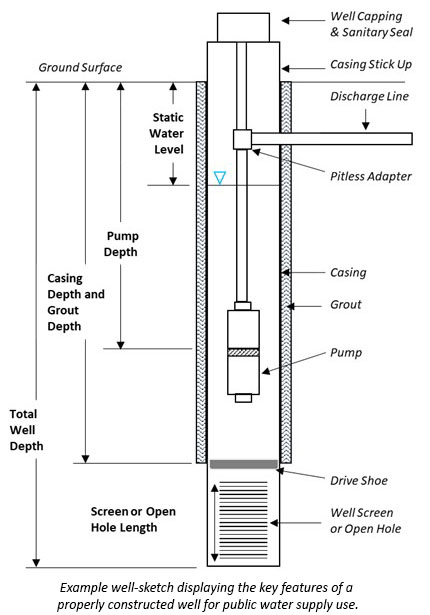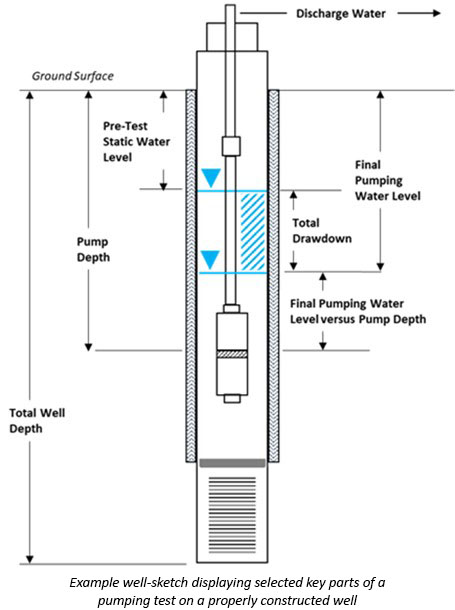Information for Pennsylvania-licensed Well Drillers
Pennsylvania-licensed well drillers providing well-drilling services for a noncommunity water system are expected to document all work activities associated with the project. This ensures that DEP has information available to verify that the well source does not pose a threat to public health.
A typical well-drilling project for a noncommunity water system includes the following components: (1) well-site selection and site survey, (2) well drilling and well construction, (3) well development and disinfection, and (4) pump testing and water-quality sampling. Well drillers with experience in drilling public water-supply wells should have the knowledge and expertise to address any combination of the project components for a noncommunity water system well source.
For guidance on how to construct and test a well, use DEP’s
Public Water Supply Manual, Part IV, Noncommunity System Design Standards, DEP ID: 383-2128-108 and DEP’s
Noncommunity Water System Application, Module 1 – Groundwater Source, DEP ID: 3940-FM-BSDW0568a. Publications are available in the DEP e-Library.
Documentation of Well-drilling Activities

To document well-drilling activities, the Pennsylvania-licensed well driller must provide the public water supplier (project applicant) with the Water Well Completion Report that is submitted to the Pennsylvania Geological Survey and completed versions of the
Well Construction Demonstration Datasheet and the
Well Risk Assessment Form, both of which are part of DEP's
Module 1. The well information provided in Module 1 is similar to the information that is required for wells under the Pennsylvania Water Well Drillers License Act (Act 610).
The Well Construction Demonstration Datasheet of Module 1 is used by DEP to determine if the well meets construction standards. The form includes details on the following: well capping, casing and grout, drive shoe, well screen or open hole, pitless adaptor, discharge line, pump, well development and disinfection, well construction measurements (total well depth, casing depth grout depth, depth to pump intake, static water level, and screen or open hole length), and well driller information (refer to the well-sketch figure for a summary).
The Well Risk Assessment Form of Module 1 is used by DEP to determine if a well is potentially susceptible to surface water contamination. The Form includes a series of questions related to the following: well construction attributes, aquifer characteristics, and potential sources of contamination. If the well is determined to be susceptible to surface water contamination, additional sampling and analysis may need to be conducted prior to source approval.
Documentation of the Pumping Test
 After the well is drilled, constructed, and properly developed, the well driller may be requested by the water supplier (project applicant) to conduct a pumping test to determine the sustainable rate of the well. The pumping-test operator must execute the test and complete the associated forms according to the instructions provided in
Module 1. The pumping test must be conducted on a properly developed well and the pump-depth setting for the test must be the same as the final depth setting in the finished well. During the test, the pumping-test operator must manage the discharge water and effectively measure water levels and monitor drawdown to ensure that the water level does not drop below the pump (refer to the well-sketch figure for a summary).
After the well is drilled, constructed, and properly developed, the well driller may be requested by the water supplier (project applicant) to conduct a pumping test to determine the sustainable rate of the well. The pumping-test operator must execute the test and complete the associated forms according to the instructions provided in
Module 1. The pumping test must be conducted on a properly developed well and the pump-depth setting for the test must be the same as the final depth setting in the finished well. During the test, the pumping-test operator must manage the discharge water and effectively measure water levels and monitor drawdown to ensure that the water level does not drop below the pump (refer to the well-sketch figure for a summary).